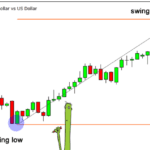News Trading Strategies: Making the Most of Market Events
News trading is a strategy that capitalizes on market volatility caused by economic reports, political events, and central bank decisions. Traders who use this approach seek to profit from the rapid price movements that often follow major news releases. However, news trading requires skill, preparation, and sound risk management to be effective. In this blog post, we’ll explore different news trading strategies and how to maximize opportunities from market events.
Understanding News Trading
News trading involves taking positions in the market based on anticipated or actual news releases. These events can significantly impact financial markets, especially forex and stocks. Some of the most influential market-moving events include:
- Central Bank Announcements (e.g., Federal Reserve, ECB, Bank of England)
- Employment Data (e.g., U.S. Non-Farm Payrolls)
- Inflation Reports (e.g., Consumer Price Index – CPI)
- Gross Domestic Product (GDP) Reports
- Geopolitical Events and Elections
- Corporate Earnings Reports
News Trading Strategies
1. The Straddle Strategy (Pre-News Trading)
The straddle strategy involves placing pending buy and sell orders before a major news release. This approach allows traders to capitalize on volatility regardless of the direction the market moves.
How to Execute:
- Place a buy stop order above the current price and a sell stop order below.
- Once the news is released, one order will be triggered.
- Cancel the untriggered order to avoid unnecessary exposure.
- Use tight stop-loss orders to manage risk.
2. Trading the Initial Spike
After a major news release, the market often experiences a sharp movement in one direction. Traders can enter a position to ride this initial spike.
How to Execute:
- Wait for the news release and observe the market reaction.
- Enter a trade in the direction of the spike if momentum remains strong.
- Use stop-loss orders to protect against sudden reversals.
3. The Retracement Strategy
Markets often overreact to news, causing an initial spike followed by a pullback before resuming the main trend. The retracement strategy allows traders to enter at a better price after this pullback.
How to Execute:
- Identify key support and resistance levels before the news.
- Wait for the market to retrace after the initial spike.
- Enter a trade in the direction of the dominant trend.
- Use stop-loss orders to limit potential losses.
4. Fading the News (Contrarian Approach)
Fading the news involves trading against the initial market reaction. This strategy is useful when traders believe the news event is already priced in or when an overreaction is expected.
How to Execute:
- Identify news events where the market has moved excessively.
- Look for reversal signals such as candlestick patterns or RSI divergence.
- Enter a trade in the opposite direction of the initial move.
- Set a tight stop-loss to protect against extended momentum.
Risk Management in News Trading
News trading carries a high level of risk due to extreme volatility. To protect your capital, consider the following risk management strategies:
- Use Stop-Loss Orders to limit potential losses.
- Adjust Position Sizing to avoid overexposure to volatile market conditions.
- Avoid Low-Liquidity Markets where slippage can be a concern.
- Stay Updated on Market Sentiment to anticipate potential reactions.
Conclusion
News trading can be profitable if executed correctly with proper risk management. Whether you choose to trade the initial spike, retracement, or use a contrarian approach, having a structured plan is essential. By staying informed and using the right tools, traders can maximize market events and take advantage of the opportunities they present.



